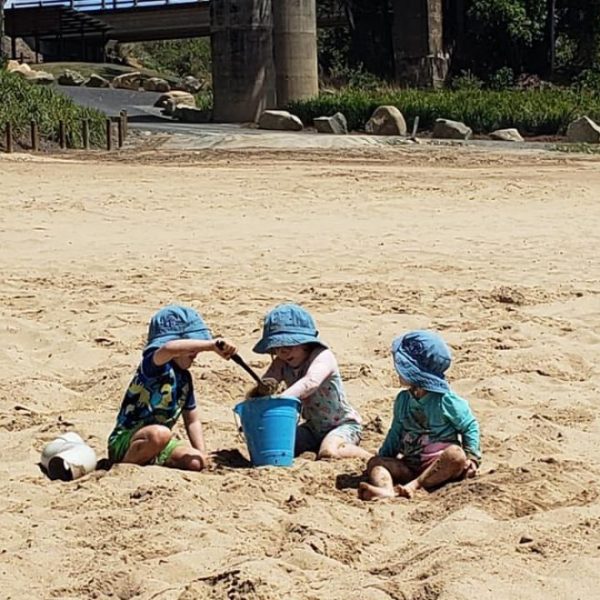NZ Government launches bold and progressive new 10 year Early Learning Action plan

The New Zealand Government has launched He taonga te Tamaiti: Every child a taonga, its long awaited ten year early learning action plan designed to create the foundation to effect long-lasting positive change to the country’s early childhood education and care (ECEC) sector.
Both the creation and the contents of the plan are likely to be of interest in Australia where no equivalent action plan for ECEC exists.
With much of the Australian approved learning frameworks, the Early Years Learning Framework (EYLF) and the Framework for School Aged Care (My Time, Our Place) drawing inspiration from New Zealand’s Te Whariki curriculum, signals of change within the NZ context may also signal future change for Australian ECEC also.
The plan, which consists of five core objectives and 25 actions, was subject to a five month consultation period, and includes but is not limited to recommendations to lower educator to child ratios for children two years of age and under, increase ECT’s in services to 100 percent of staff via incentives for operators and to introduce a new Government driven network planning function that will manage new centre supply across the country as well as a new intensity measure to more accurately measure participation rates.
Commenting on the release New Zealand Minister for Education Chris Hipkins said “The Action Plan sets out the priorities agreed with the sector and the public, after the most extensive consultation process in the history of early learning in New Zealand,” noting that early learning will be one of the Government’s top education priorities going into 2020.
Early Learning Action Plan objectives to align with wider education system
The key education and action plan objectives are as follows:
- Learners with their whānau at the centre – Learners with their whānau (extended family) are at the centre of education – Children and whānau experience environments which promote their wellbeing and support identity, language and culture.
- Barrier-free access – Great education opportunities and outcomes are within reach for every learner – All children are able to participate in early learning and have the support they need to learn and thrive.
- Quality teaching and leadership – Quality teaching and leadership make the difference for learners and their whānau – Teaching staff and leaders are well qualified, diverse, culturally competent and valued.
- Future of learning and work – Learning that is relevant to the lives of New Zealanders today and throughout their lives – Children develop capabilities that are valued by their whānau and community and support them to be competent and confident learners.
- World- class inclusive public education – New Zealand education is trusted and sustainable – Early learning services are part of a planned and coherent education ecosystem that is supported, accountable and sustainable
Notably, the action plan explicitly confirms that ECEC will fall within the reach of the Government’s system level educational vision defined in the Statement of National Education and Learning Priorities (NELP) and the Tertiary Education Strategy which outlines priorities for practice in places of learning.
Plan actions include lower ratios, incentives to drive ECTs and new network function
The Action Plan contains a list of 25 actions organised within the five objective categories listed above.
Some key recommendations include:
- Educator to child ratios to be lowered – Ratios for children from birth to two years of age will move from the current one to five to one to four and for children aged between two and three years of age, ratios will move from one to ten to one to five which is in line with current Australian regulations. The implementation will be staged, with complying centres receiving higher funding rates to help pay for the increased costs.
- Incentivise for 100 per cent ECTs but regulate for 80 per cent – In the short term centres which have 100 per cent of their staff as early childhood teachers (ECTs) will receive a higher funding rate from government. Over the medium term regulations will be changed to require 80 per cent of teaching staff to be ECTs. The current requirement is for 50 per cent of staff qualified as ECT’s.
- Introduce a managed network approach to assist targeting of new services – The Ministry licences, monitors, funds and supports early learning services but does not currently actively engage in network planning. The Ministry will take a staged approach to developing a network function which will involve better information provision but also a new licensing regime designed to ensure that oversupply and undersupply are mitigated.
- Develop a mechanism to improve teachers salaries and conditions – The Ministry will develop a mechanism that promotes more consistent and improved teacher salaries and conditions in the early learning sector.
- Create innovation and research hubs for ECEC services – The Ministry will contract the development of innovation and research hubs that enable early learning teachers and services to access expertise, partners and resources. These hubs will be accessible online to mitigate barriers to participation, and will be designed to promote cross-service and cross-sector collaboration.
- Raise the levels of home-based educators’ qualifications – All educators within quality rate services must hold a Level 3 ECE qualification or credits towards the Level 4 ECE qualification with a target to lift the base qualification to Level 4.
In addition to the above the Ministry of Education has formulated a new participation measure to assess “intensity” of enrolment across a range of categories related to the number of hours attended by children per week.
This differs from existing measures which simply focus on participation and will provide an extra layer of transparency and understanding when assessing the impact of broader ECEC policy on outcomes.
The plan will now be presented to Parliament for approval and then included in annual budgetary processes.
To read a summary of the He taonga te Tamaiti: Every child a taonga please click here.
To read the full report please click here.
Popular

Policy
Economics
Jobs News
Provider
Workforce
Children’s Services Award changes finalised to address gender-based undervaluation
2025-12-12 06:58:10
by Fiona Alston

Economics
Provider
Quality
Jobs News
Policy
Practice
Workforce
The year in review: 2025's most impactful ECEC news stories and shifts
2025-12-16 07:32:18
by Fiona Alston

Policy
Quality
Practice
Provider
Workforce
Mandatory national child safety training goes live in February 2026: Register now via Geccko
2025-12-12 08:01:48
by Fiona Alston













